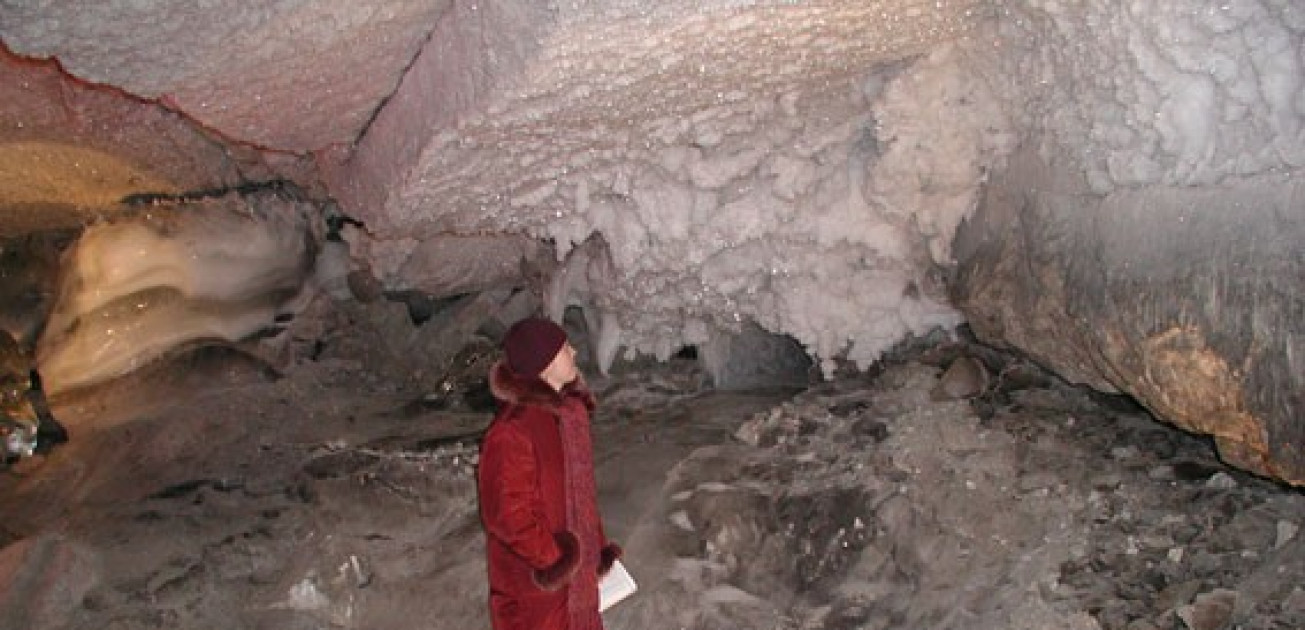
KUNGUR ICE CAVE
Kungur Ice cave is one of the oldest show caves within Russia. Total amount of visitors per year is exceeded 100000. The Kungur Ice Cave distinguishes ...
"Our world’s caves are places of wonder, mystery and majestic beauty. Show caves around the world are embracing their role in protecting and preserving caves and providing a place for people to learn about these special, natural, cultural and historical resources.
Show caves also play another important nature tourism role of sustainable economic development, providing jobs, and helping the economy of their regions.”
Kungur Ice cave is one of the oldest show caves within Russia. Total amount of visitors per year is exceeded 100000. The Kungur Ice Cave distinguishes from similar objects of underground world with these parameters: 1.The lowest hypsometrical entrance height (119,99 м. above the sea level) amongst caves with permanent ice formations, situated outside the permafrost zones. 2.Unique conditions of the cave ice formation, richness and diversity of its forms (congelation, sublimate and sedimentary-metamorphic ices, different in origin and forms with small volume of ice sediments), equilibrium position of subterranean glacier (natural seasonal decrease is annually compensated).
Kungur Ice Cave formed in the layers of karsting carbonaceous sulphate rocks that included anhydrite, gypsum, gypsum anhydrite, dolomite, limestone, and breccia with the same composition. It gives an opportunity to study the lower part of stratotypical section of Iren horizon of Kungur stage.
Entrance altitude: 119,99 m.
The cave can be referred to one-level labyrinth: length – 5,7km, height – 32 m, area – 65,0 thsd m2, volume – about 206,0 thsd m3. Kungur Cave is one of Russia’s largest gypsum caves in terms of length and the largest in volume. It takes 50% of the total length and volume and over 60% of the total area of all 158 gypsum caves in Priuralie. Kungur Cave is famous for its large grottos; small grottos are less common, narrow passages are very few. Large grottos are created on the crossing of galleries or in a gallery that was split by a rock-fall into two parts. Galleries in the slope part are covered with deposits due to collapse. Farther parts of galleries are also covered with rock-falls. Geographic research helps to reveal unexplored passes and extensions.
Kungur Ice Cave is located on pretty much the same level with Sylva river surface. Grotto walls carry marks of corrosion reworking (up to the altitude of 119-121 m, or 6-8 m above Sylva low-water stage). Grottos created under the influence of gravitation processes and organ pipes of corrosion-erosion origin are above the level of the I Sylva terrace above the flood-plain. Organ pipes have no horizontal passages. Morphological analysis of the Cave shows specific conditions that resulted in the formation of the Cave. Further studies will help to develop the theory of speleogenesis and update karstologic methodology.
Certain conditions define the Cave’s water-bearing nature: it has over 70 ground lakes of different sizes and feed. The amount of lakes fluctuates depending on the season. The total area of lakes amounts to 7,5 thsd. m2 (11% of the total grotto area). The largest lake – Big ground lake (total area - 1460 m2) – is a tourist site located in the Grotto of Peoples’ Friendship.
The Cave has ideal air draught that creates specific climate. The Cave features a full range of climatic zones that is quite rare for ordinary caves, especially gypsum caves: the zone of permanent freezing temperatures with considerable fluctuations and permanent ice, the zone of permanent temperatures above zero that comply with the temperature of karst block, and the zone of temperatures above zero with considerable fluctuations. Due to specific air draught, the Cave entrance is in the zone of permanent freezing temperature. However, the area around the Cave is outside the zone of permafrost.
The zone of permanent freezing temperatures provides the variety of ice forms of different origin. Multi-year and seasonal ice is the main tourist attraction of the Cave.
Kungur Ice Cave features 3 genetic types of ice: congelation (sinter ice, segregated ice, and ice-cement) and aqueous-metamorphic.
Kungur Cave is a habitat of a local endemic form - Crangonyx chlebnicovi ssp. maximovitchi.






Address: S. Filippovka, Kungursky Rayon
Town / City: Perm Krai, 617472
Country: Russia State: Perm
Email:stalagmit@kungurcave.ru
Phone: +7.34271.62610
Fax: +7.34271.62609
Web: kungurcave.ru
Latitude: 57.4412994385
Longitude: 57.0040016174
Name: KUNGUR ICE CAVE
Name original: Кунгурская Ледяная пещера
ISCA member: Kungur Ice Cave
Length: 5700 m
Depth: 0 m
Elevation of entrance: 120 m
Number of visitors: 100000 / per year
Temperature: -32.00 - 5.20 °C
Length of show path: 1300 m
Duration of visit: 90 min